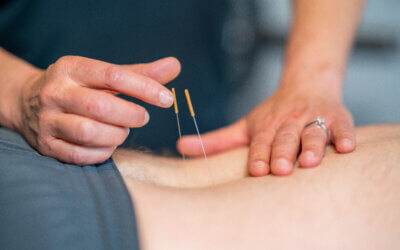Fibromyalgia is one of the trickiest medical conditions to treat. This is in large part due to two things:
- The cause of fibromyalgia is often a mystery — Fibromyalgia roughly affects 10 million Americans. A majority of these cases cannot be traced to an identifiable cause. Without knowing what exactly causes fibromyalgia, it becomes more difficult to treat anything except the symptoms.
- There is no known cure for fibromyalgia — There is no medication or treatment that outright eliminates fibromyalgia. Once you develop the condition, it tends to affect you for life.
This is a problem because fibromyalgia causes long-lasting pain and fatigue that keeps you from enjoying a normal daily life. However, just because fibromyalgia has no known cure, it doesn’t mean that there aren’t treatments that can help.
Why you need physical therapy for fibromyalgia
Since one of the main ways fibromyalgia affects you is by randomly causing pain and tension in your muscles, you need to visit a physical therapist for treatment.
Physical therapists are licensed health care professionals who specialize in conditions that affect your muscles, soft tissue, bones and joints. They can examine your condition to identify possible triggers of your fibromyalgia and develop a treatment that can help you manage your symptoms and prevent potential flare-ups.
Physical therapy for fibromyalgia often includes treatments like:
- Gentle exercises and stretches — Stretches and exercises help improve your strength and flexibility. Stronger and more flexible muscles are less prone to pain and stiffness from tension related to fibromyalgia or other conditions.
- Hands-on therapy — Physical therapists can perform hands-on techniques, like soft tissue mobilization, to help with fibromyalgia. Soft tissue mobilization helps reduce tension and can break down trigger points that may cause fibromyalgia symptoms.
- Posture guidance — Poor posture can add strain to your muscles and joints, which could be a potential trigger for fibromyalgia symptoms. Improving your posture can help prevent flare-ups triggering from too much strain.
- Relaxation techniques — Fibromyalgia flare-ups can still occur despite your best efforts to prevent them because the cause is not always clear or treatable. In these circumstances, a physical therapist can guide you through relaxation techniques that can help you get through bouts of pain.
Visit Continuum Wellness today for fibromyalgia treatment
Is fibromyalgia causing you constant pain and getting in the way of your daily life? Our team at Continuum Wellness can examine your condition and guide you through a personalized treatment routine to help manage the pain. Contact our team today for more information about physical therapy for fibromyalgia or to schedule an initial appointment.



